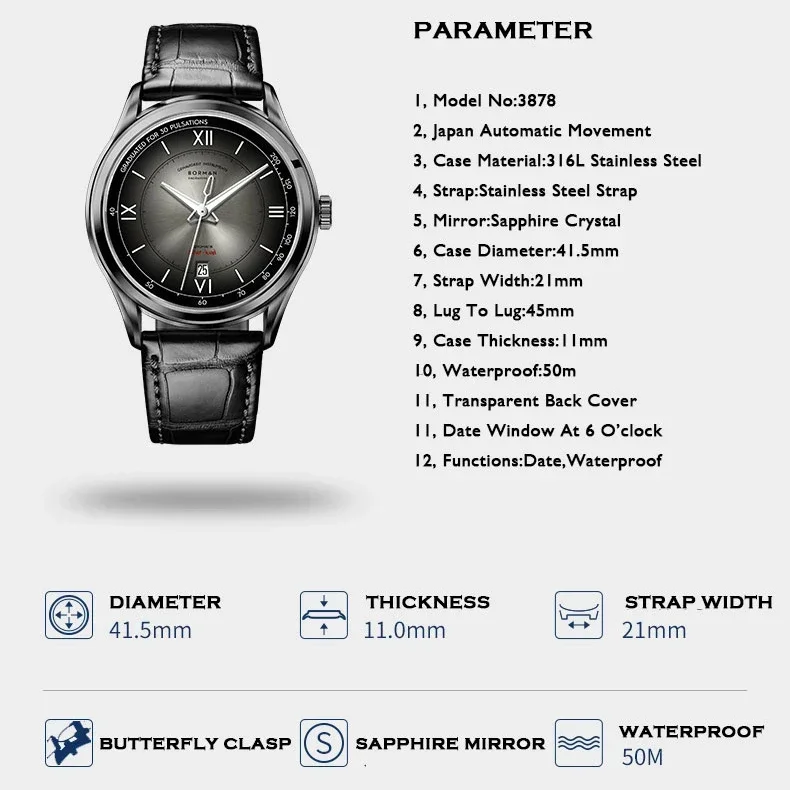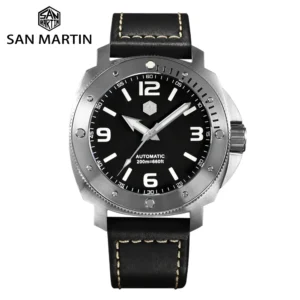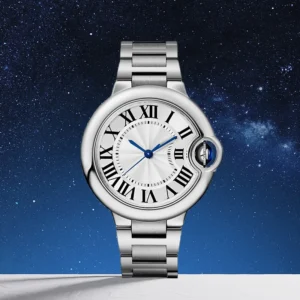What Defines a Dress Watch: The Quintessential Formal Timepiece
The essence of a dress watch lies in its understated elegance. These refined timepieces were specifically designed for formal occasions, embodying sophistication without drawing attention away from the overall attire.
Dress watches represent the purest expression of horological restraint – these timepieces prioritize aesthetics and refinement over rugged functionality or complex features. Their primary purpose is to complement business attire and formal wear while adhering to traditional etiquette rules that value subtlety as the highest form of sophistication.
The philosophy behind dress watches emerged from an era when watches transitioned from pocket to wrist, maintaining the elegant discretion expected in formal settings. Unlike their casual counterparts, these timepieces aren’t meant to showcase technological prowess or withstand extreme conditions – they exist purely to mark time elegantly while harmonizing with formal attire.
Key principles that define the dress watch concept include:
- Understated design that complements rather than competes with formal clothing
- Emphasis on thinness and comfort under a shirt cuff
- Classic proportions that transcend passing trends
- Refined finishing that rewards close inspection
- Quiet elegance that speaks to tradition and taste
Understanding the distinct features of dress watches requires appreciating this fundamental purpose – they are designed to be the perfect finishing touch to formal attire, not to showcase complications or rugged capabilities. The defining characteristics of a classic dress watch have evolved from this philosophy, creating timepieces that epitomize refined elegance.
Essential Characteristics of a True Dress Watch
A proper dress watch adheres to specific design codes that have remained remarkably consistent throughout horological history. These characteristics ensure the watch fulfills its primary purpose: complementing formal attire with understated elegance.
Case Design
- Profile: Distinctively slim, typically under 10mm thick to slide easily beneath shirt cuffs
- Diameter: Modest proportions, traditionally 36-40mm, emphasizing restraint over presence
- Shape: Predominantly round or rectangular with clean lines and minimal complexity
- Finish: Polished surfaces that catch light subtly and reflect attention to detail
- Materials: Traditionally precious metals (gold, platinum) or high-grade stainless steel with excellent finishing
Dial Elements
- Layout: Clean, minimalist design with uncluttered space and balanced proportions
- Hour Markers: Simple indices or elegant Roman numerals; occasionally Arabic numerals in more contemporary designs
- Color Palette: Subdued tones dominate – white, silver, cream, black, or occasionally deep blue
- Luminescence: Generally absent, as formal events are presumed to be well-lit
- Date Display: Either absent entirely or executed minimally to maintain dial symmetry
Movement Considerations
- Profile: Emphasis on thinness to enable the slim case design
- Winding Mechanism: Traditionally manual-wind, though refined automatic movements are widely accepted
- Focus: Decoration and finishing quality prioritized over extreme robustness
- Visibility: Movement often hidden behind solid caseback, though exhibition backs are increasingly common in modern interpretations
Strap Options
- Material: Fine leather (particularly alligator or crocodile) with elegant grain
- Width: Proportional to case size with gentle tapering
- Hardware: Simple pin buckles rather than bulkier deployant clasps, often in matching metal
- Alternatives: Occasionally ultra-thin Milanese bracelets or integrated leather designs
Complications
- Philosophy: Few to none, emphasizing time-telling purity
- Acceptable Additions: Small seconds display, simple date window, moonphase
- Prestigious Exception: Perpetual calendar considered the “dressiest” of complications due to its association with astronomical precision
The definitive guide to dress watch design explores these elements in greater detail, helping enthusiasts recognize the subtle features that distinguish true dress pieces. For those seeking examples, our thin automatic dress watches collection showcases modern interpretations that honor these traditional guidelines.
Prime Occasions for Wearing a Dress Watch
Dress watches are specifically designed for moments that call for sophistication and refinement. Their understated elegance makes them particularly appropriate for:
Black-Tie Events
These formal evening occasions represent the natural habitat of the dress watch. When attending galas, awards ceremonies, opera performances, or high-end charity events, a slim dress watch peeking occasionally from beneath a tuxedo cuff provides the perfect subtle accent.
Business Formal Settings
Executive meetings, important client presentations, and industry conferences with formal dress codes call for a timepiece that communicates refinement and attention to detail. Here, a dress watch serves as a quiet statement of professional polish.
Milestone Celebrations
Personal occasions of significance—weddings, anniversary dinners, graduation ceremonies—warrant timepieces that match their importance. The restrained elegance of a dress watch complements the formality of these events without drawing attention away from the moment itself.
The principle guiding dress watch etiquette remains “less is more.” The watch should never announce itself loudly but rather be discovered upon closer inspection, revealing thoughtful details and excellent craftsmanship. Manual-wind dress watches represent the most traditional choice for these formal settings, offering the heritage and slimness that these occasions demand.
What Makes a Casual Watch: Versatility and Everyday Functionality
While dress watches excel in formal settings, casual watches embrace a fundamentally different philosophy—one centered on everyday functionality, durability, and versatile performance. These timepieces are designed to accompany their wearers through the varied activities of daily life rather than just special occasions.
Casual watches prioritize practical considerations alongside aesthetics, offering features that enhance their usefulness in diverse situations. Unlike the restrained design language of dress pieces, these watches embrace a broader range of creative expression and personal style, allowing for more experimentation with colors, materials, and complications.
The development of casual watches largely evolved from purpose-built tool watches designed for specific professions or activities—diving, flying, racing, exploring—that gradually found their way into everyday wear as lifestyle preferences shifted toward more relaxed attire.
Key principles that define casual watches include:
- Emphasis on durability and resistance to everyday hazards
- Enhanced legibility in various conditions
- Practical features that serve specific functions
- Comfort during extended wear in active situations
- Design versatility that works with relaxed attire
The contrast with the elegance of minimalist dress watch design is striking—where dress watches whisper, casual watches speak clearly and confidently, prioritizing function while still offering considerable style.
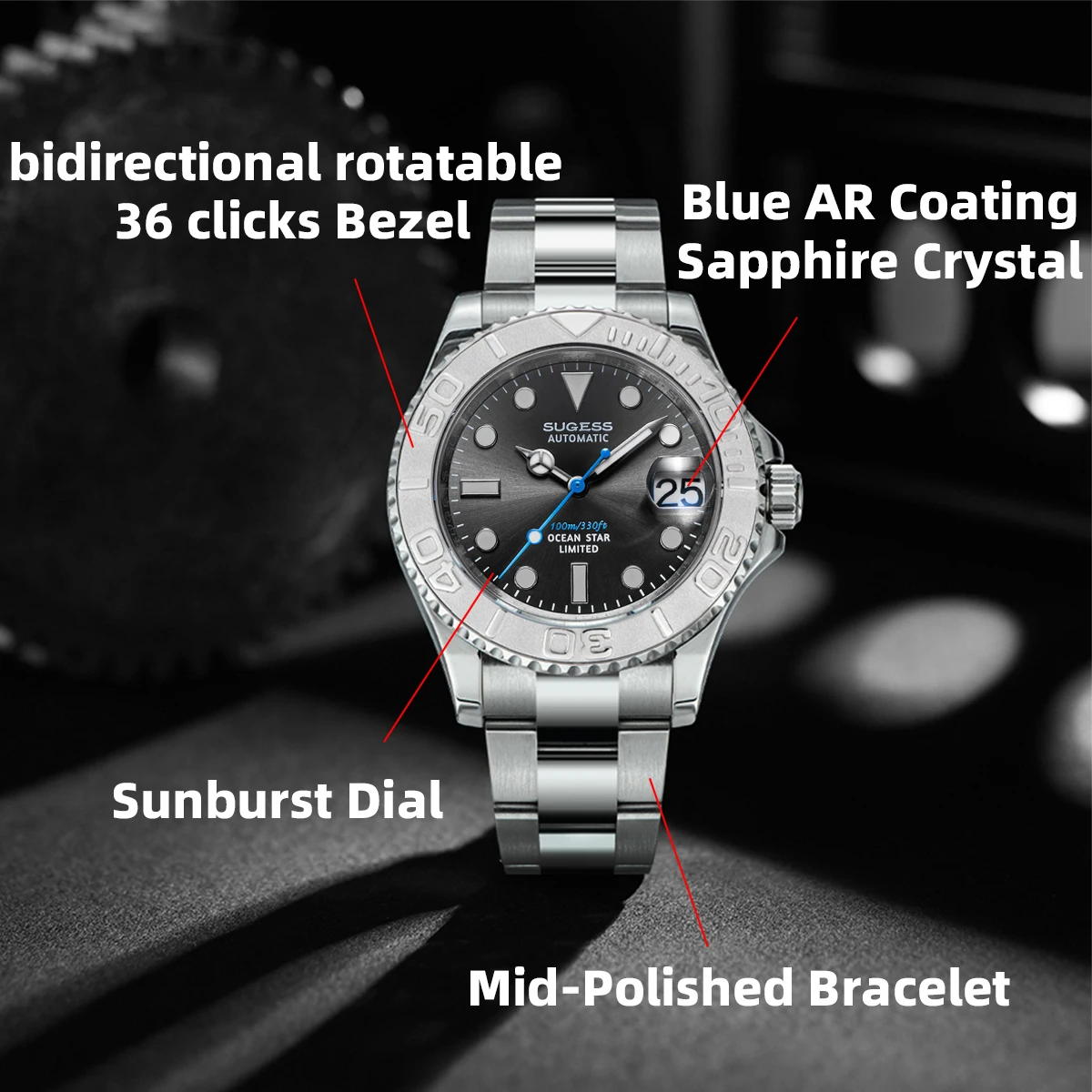
Key Features and Varieties of Casual Watches
Casual watches encompass a diverse range of styles united by their emphasis on everyday wearability and practical features. Understanding their key characteristics helps distinguish them from their formal counterparts.
Case Construction
- Size: Generally larger, typically 38-45mm in diameter
- Thickness: Varied but often substantial (10-15mm) to accommodate robust movements and features
- Shapes: Diverse forms beyond traditional round cases, including cushion, tonneau, and asymmetrical designs
- Finishing: Often incorporates brushed surfaces or mixed finishing for practicality and visual interest
- Materials: Wide variety including stainless steel, titanium, ceramic, bronze, and various composites
Dial Design
- Layout: Greater complexity and information density
- Markers: Larger hour markers with generous luminous material for visibility in various conditions
- Colors: Bold and varied colorways, often with contrasting elements for enhanced legibility
- Information Display: Additional scales, tracks, and indicators related to specific functions
- Tool-Specific Features: Specialized elements like diving bezels, tachymeters, or navigation aids
Straps and Bracelets
- Metal Bracelets: Robust link designs with secure clasps
- Rubber/Silicone: Waterproof and flexible options for active use
- NATO/Nylon: Durable textile straps with military heritage
- Canvas: Casual fabric options with rugged appeal
- Leather: Thicker, more robust cuts often with contrast stitching and weather treatment
Functionality Focus
- Water Resistance: Minimum 100m for true sports watches, often 200m+ for dive models
- Shock Resistance: Enhanced protection for active wear
- Magnetic Resistance: Protection from everyday electronic devices
- Specialized Functions: Features tailored to specific activities or professions
Common Complications
- Chronographs: Stopwatch functionality for timing events
- Rotating Bezels: For tracking elapsed time or additional zones
- Date Displays: Often with magnifiers for improved readability
- GMT Functions: Second time zone tracking for travelers
- Day/Date: Complete calendar information for everyday utility
- Power Reserve Indicators: Visual reference for remaining energy in automatic watches
Our collection of automatic dive watches showcases many of these features in action, demonstrating how functionality and style can seamlessly combine in modern casual timepieces.
Popular Types of Casual Watches and Their Distinct Purposes
Casual watches have evolved into distinct categories, each with specialized features designed for specific environments or activities. Understanding these variations helps in selecting the right timepiece for particular needs.
Dive Watches
These robust timepieces originated for underwater exploration but have become popular everyday watches due to their durability and distinctive aesthetic.
– Water resistance rated to at least 200 meters
– Unidirectional rotating timing bezel to track elapsed time safely
– Highly legible dials with substantial luminous elements
– Secure bracelets or straps designed to fit over wetsuits
– Robust construction to withstand pressure and environmental challenges
Field Watches
With military heritage, these watches emphasize reliability, legibility, and straightforward functionality.
– Clean, highly legible numerals often in 12 and 24-hour format
– Durable construction with emphasis on shock resistance
– Often mounted on canvas or nylon straps for comfort and practicality
– Matte finishes to prevent unwanted reflections
– Modest size with excellent readability
Pilot/Aviation Watches
Designed originally for aviators, these timepieces prioritize instant legibility and specific flight-related functions.
– Oversized crowns that can be operated while wearing gloves
– High-contrast dials for at-a-glance readability
– Often feature chronograph functions for timing flight segments
– Some models include slide rule bezels for flight calculations
– Typically larger case sizes for maximum legibility in cockpit conditions
Chronographs
These watches include stopwatch functionality, making them practical for timing events and adding visual complexity.
– Multiple sub-dials displaying elapsed seconds, minutes, and hours
– Push buttons for starting, stopping, and resetting timing functions
– Often include tachymeter scales for speed calculations
– Sporty aesthetic with technical appeal
– Range from simple two-register layouts to complex triple registers
Everyday Versatile Watches
These models balance casual elements with restrained design for maximum versatility.
– Clean design that works across various settings
– Good water resistance (typically 100m) for worry-free daily wear
– Comfortable dimensions for all-day wearability
– Balanced proportions that work with both casual and smart-casual attire
– Often feature quick-change strap systems for adaptability
Our collection of automatic field military watches demonstrates how traditional tool watch designs have evolved to meet contemporary casual wear expectations.
Direct Comparison: Dress Watches vs. Casual Watches
Understanding the key differences between dress and casual timepieces helps in making informed choices for specific occasions and building a versatile watch collection.
| Feature | Dress Watches | Casual Watches |
|---|---|---|
| Size | Slim (5-10mm thick); modest diameter (36-40mm) | Thicker (10-15mm+); larger diameter (38-45mm+) |
| Case Materials | Precious metals, polished stainless steel | Variety including steel, titanium, ceramic, bronze |
| Dial Design | Clean, minimal; limited text; simple markers | Busier; technical elements; varied colors; strong lume |
| Complications | Few or none; occasionally date or moonphase | Multiple; chronographs, date, rotating bezels, GMT |
| Strap Options | Fine leather (alligator/crocodile); occasional Milanese | Metal bracelets; rubber; NATO; canvas; thick leather |
| Water Resistance | Minimal (30-50m); emphasis on thinness | Substantial (100m+); often 200-300m for sports models |
| Movement Focus | Thinness; decoration; traditional finishing | Robustness; accuracy; functional reliability |
| Appropriate Settings | Formal events; business meetings; celebrations | Daily wear; active pursuits; casual environments |
| Design Philosophy | Restraint and subtlety | Functionality and visual presence |
While these categories have distinct characteristics, many watches exist in a middle ground, offering elements of both styles. The distinction between dress watch vs normal watch continues to evolve as contemporary design increasingly blends elements from multiple traditions.
The most significant differences appear in case thickness, dial complexity, and water resistance—dress watches prioritize slim elegance and simplicity, while casual watches embrace robust construction and practical features. These differences reflect their intended purposes: dress watches complement formal attire discretely, while casual watches provide reliable functionality for everyday activities.
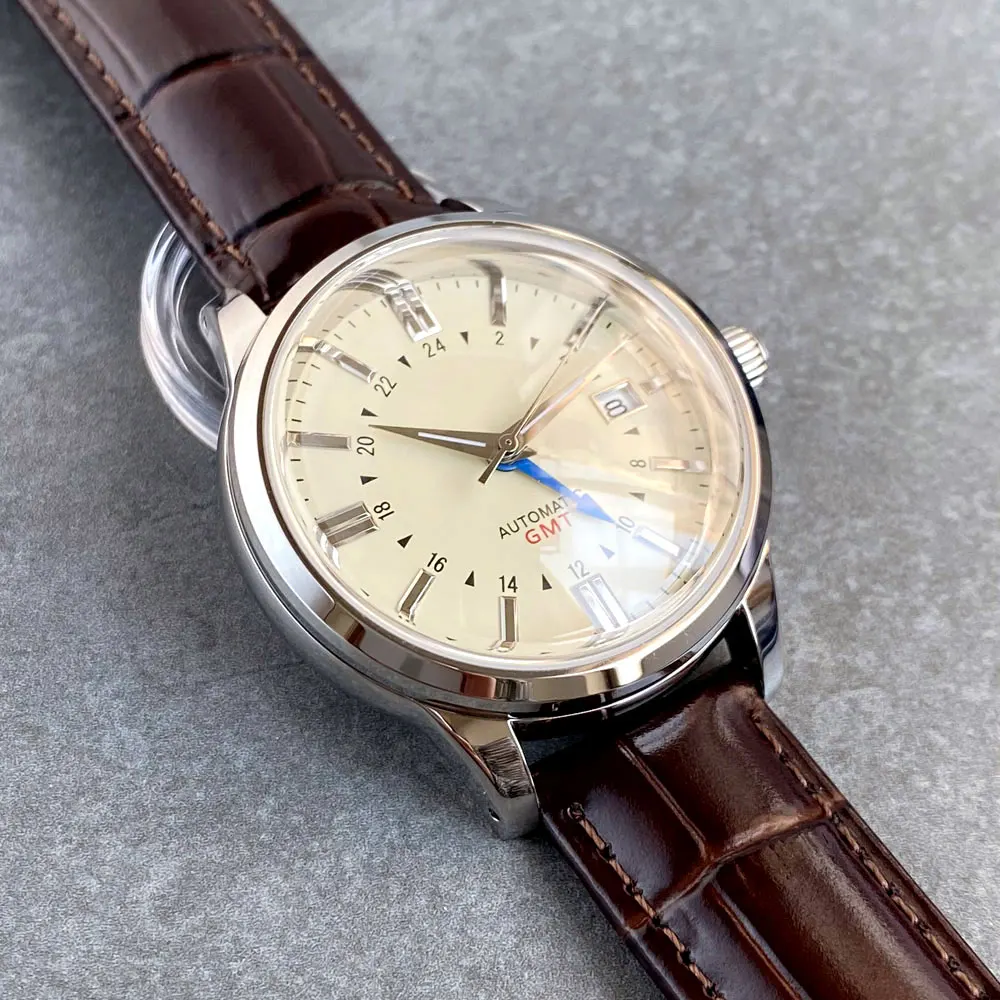
The Rise of Versatile Watches: Bridging Formal and Casual
Modern watchmaking has increasingly embraced designs that effectively straddle the line between formal and casual categories, creating timepieces with remarkable versatility. These watches offer a compelling solution for those seeking to minimize their collection while maximizing wearability across different settings.
The concept of “sports elegance” has emerged as a significant trend, with integrated bracelet designs and clean dials paired with robust construction. These watches offer sufficient refinement for business environments while providing enough durability for weekend activities—truly versatile companions for contemporary lifestyles.
Key characteristics of these versatile pieces typically include:
– Moderate case sizes (38-41mm) that work across various wrist sizes and style contexts
– Clean dials with minimal but practical complications (often just date)
– Water resistance of at least 100m for worry-free daily wear
– Polished and brushed finishing elements that balance formality with practicality
– Adaptability to different strap options for transformation between settings
One of the most powerful ways to transform a watch’s formality is through strap changes. The same watch can present dramatically different personalities when paired with an alligator leather strap versus a sporty rubber option or steel bracelet. This adaptability is particularly valuable in watches with conventional lug designs that facilitate easy strap changes.
The context in which a watch is worn significantly impacts its perceived formality. A sleek sports watch might appear perfectly appropriate with a business suit in contemporary settings, while traditional minimalist vs classic dress watches might adapt surprisingly well to casual scenarios when worn with confidence and complementary attire.
Building Your Watch Collection: How Many Watches Do You Need?
Creating a meaningful watch collection should begin with an honest assessment of your lifestyle and the environments you frequently navigate. Consider these key factors:
- Professional setting formality (corporate office vs. casual workplace)
- Frequency of attending formal events and celebrations
- Regular recreational activities (sports, outdoor pursuits, travel)
- Personal style preferences and comfort priorities
- Budget considerations and storage capabilities
For many enthusiasts, a two-watch collection provides an excellent foundation—one dress piece for formal occasions and one casual watch for everyday wear. This approach ensures appropriate options for most situations without overwhelming complexity or maintenance demands.
The “one watch solution” can work effectively for those with consistent lifestyle patterns or who favor versatile designs. Modern sports-elegant watches with clean dials, moderate sizes, and good water resistance can transition reasonably well between business meetings and weekend activities, especially when paired with appropriate straps.
When building your collection, consider these prioritization questions:
– Which environment do you spend most of your time in?
– What watch would get the most consistent wear?
– Which occasions currently leave you without an appropriate timepiece?
– Are there specific functions or complications that would benefit your daily activities?
For those seeking core pieces to anchor their collection, our classic automatic dress watches offer timeless designs that excel in formal settings while maintaining long-term relevance.
Military Inspired Automatic Watches, Rugged Automatic Watches, Tactical Automatic Watches
Price range: $852.14 through $994.60 Select options This product has multiple variants. The options may be chosen on the product pageClassic Automatic Dress Watches, Day Date Automatic Watches, Perpetual Calendar Automatic Watches
Price range: $540.60 through $574.60 Select options This product has multiple variants. The options may be chosen on the product pageClassic Automatic Dress Watches, GMT Automatic Watches, GMT Pilot Watches
Price range: $1,240.86 through $1,463.33 Select options This product has multiple variants. The options may be chosen on the product pageAutomatic Chronograph Watches, Classic Style Dive Watches
$3,053.06 Select options This product has multiple variants. The options may be chosen on the product pageBronze Automatic Watches, Military Inspired Automatic Watches, Professional Spec Dive Watches
Price range: $1,442.21 through $1,442.82 Select options This product has multiple variants. The options may be chosen on the product pageClassic Automatic Dress Watches, Thin Automatic Dress Watches
$437.64 Select options This product has multiple variants. The options may be chosen on the product page
Styling Guide: Wearing Dress and Casual Watches Appropriately
Dress Watch Styling
Wearing a dress watch properly enhances its elegant character while complementing formal attire:
- Match leather to accessories: Traditionally, your watch strap should coordinate with your belt and shoes—black with black, brown with brown—though contemporary style allows more flexibility.
- Ensure proper fit under cuffs: A dress watch should slide smoothly under your shirt cuff, occasionally revealing itself when you extend your arm, rather than catching on fabric.
- Balance with other accessories: When wearing cufflinks or other jewelry, ensure your watch doesn’t compete—if other pieces are bold, keep your timepiece subtle.
- Consider proportions: Choose a watch size that harmonizes with your wrist size and frame—oversized watches generally clash with formal attire.
- Maintain formality consistency: The more formal the event, the more traditional and restrained your watch should be—a plain white-dialed gold watch on black alligator represents peak formality.
Avoid common missteps like wearing overly thick or complicated watches with formal attire, choosing bright or contrasting straps with business suits, or selecting case sizes that overwhelm your wrist or shirt cuff.
Casual Watch Styling
Casual watches offer greater styling flexibility and personal expression:
- Match watch style to activity: Select appropriate watches for specific contexts—dive watches for water activities, field watches for outdoor adventures, chronographs for sporting events.
- Coordinate with attire tone: While exact matching isn’t necessary, ensure your watch complements your overall look—titanium or steel watches pair well with cooler colors, while gold-toned or bronze watches harmonize with warmer palettes.
- Experiment with straps: Changing straps offers a cost-effective way to refresh your watch’s appearance—try colorful NATO straps for summer, leather for fall/winter, and rubber for active pursuits.
- Consider proportional balance: Larger, bolder watches generally pair better with casual clothing, while slimmer pieces work well with smart casual attire.
- Express personality thoughtfully: Let your watch reflect your interests and style without overwhelming your overall appearance.
Knowing how to identify a dress watch helps ensure appropriate selections for various occasions, allowing you to navigate different social contexts with confidence.
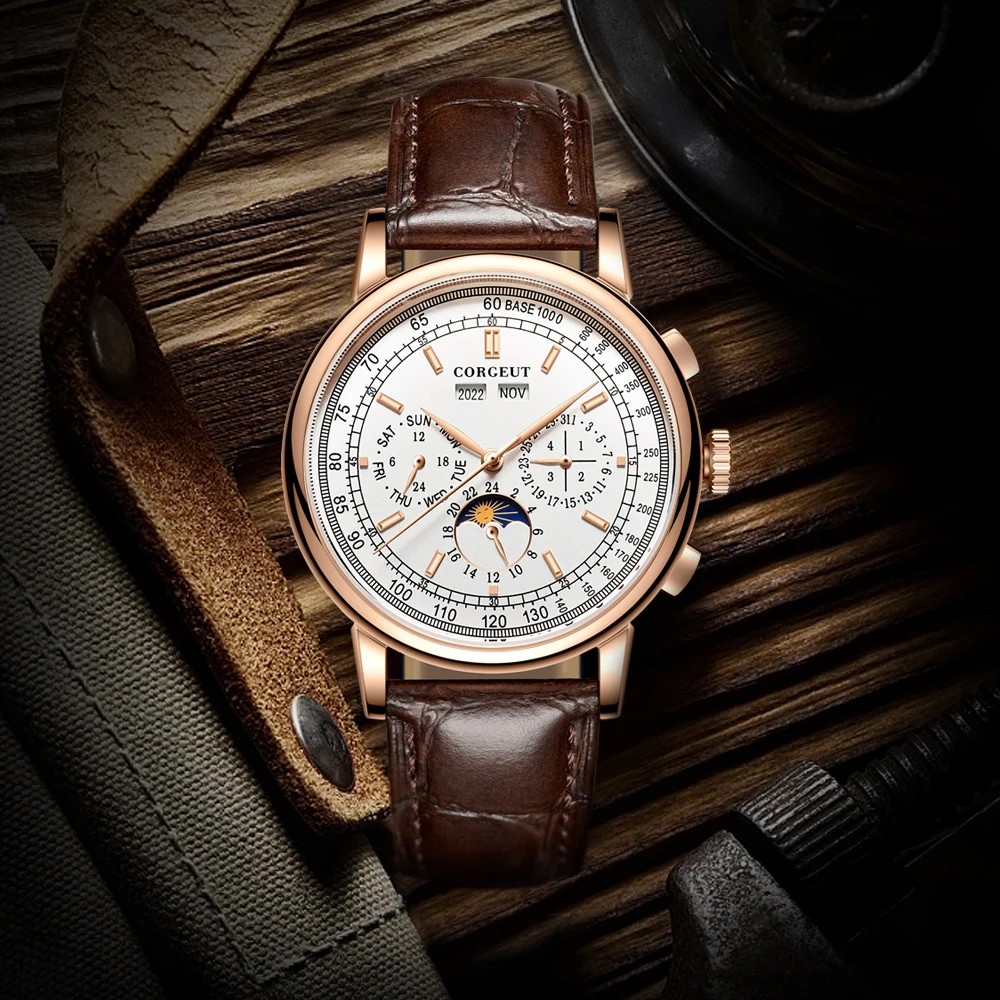
Beyond Style: Additional Factors in Choosing Between Dress and Casual Watches
Budget Considerations
Price points can vary significantly between dress and casual categories. Fine dress watches from prestigious brands often command premium prices due to their thin movements, precious metals, and hand-finishing. However, excellent dress watch options exist at more accessible price points, particularly from independent brands focusing on value.
Casual watches frequently offer strong value propositions, as their robust construction and practical features provide tangible benefits beyond aesthetics. Investment potential differs as well—classic dress watches in precious metals often maintain value well, while casual watches with strong heritage or limited availability may appreciate over time.
Movement Preferences
Your movement preference impacts both the character and maintenance requirements of your timepiece. Dress watches traditionally feature manual-wind movements for their thinness, though modern automatic calibers have achieved remarkable slimness while offering convenience. Casual watches typically employ automatic or quartz movements prioritizing reliability and accuracy under active conditions.
Consider how each movement type aligns with your lifestyle—do you enjoy the daily ritual of winding a watch, or prefer the convenience of an automatic that maintains time when worn regularly?
Brand Heritage
Brand identity significantly influences how a watch is perceived. Traditional dress watch houses like Patek Philippe, Jaeger-LeCoultre, and Vacheron Constantin carry horological prestige that enhances formality. Sports and tool watch specialists such as Rolex, Omega, and Tudor bring credibility to casual timepieces through their functional heritage.
Personal Style
Ultimately, personal preference should guide your selection. Some individuals naturally gravitate toward the refined elegance of dress watches, while others prefer the robust character and functionality of casual timepieces. Your authentic style—not rigid rules—should determine which watches resonate with you and earn a place in your collection.
For those drawn to traditional dress watch styling, our automatic dress watches collection offers excellent options at various price points, combining classic design with modern reliability.
FAQ: Common Questions About Dress and Casual Watches
Can I wear a dress watch casually?
Yes, many dress watches can work in casual settings, particularly those with steel cases and simpler dials. Changing the strap from formal leather to a more casual option can help transition a dress watch to relaxed environments.
Is a chronograph ever appropriate with formal attire?
Traditionally, chronographs were considered too sporty for formal wear. However, modern style has relaxed these distinctions—a slim, elegant chronograph with minimal sub-dials can work with business attire, though purists still prefer simple watches for black-tie events.
What’s the minimum water resistance a casual watch should have?
For true everyday versatility, 100 meters of water resistance provides peace of mind for hand washing, rain exposure, and occasional swimming. Active water sports generally demand 200 meters or greater.
Can I wear a casual watch to a wedding or formal event?
While traditional etiquette suggests a dress watch for formal occasions, contemporary style allows more flexibility. A refined casual watch (particularly one without bold colors or aggressive styling) can work for many modern formal events, especially when the overall attire has contemporary elements.
How important is movement type in distinguishing dress from casual watches?
Movement type contributes to a watch’s character but isn’t definitive in categorization. While dress watches traditionally favor manual or automatic mechanical movements, and sports watches often emphasize durability, the external design elements more strongly determine a watch’s formality level.
Do dress watch rules differ for women’s timepieces?
Women’s dress watches generally follow similar principles of restraint and elegance but often incorporate more decorative elements like diamonds, mother-of-pearl dials, or smaller cases. The contemporary trend toward gender-neutral sizing has blurred these distinctions, with many women preferring traditional men’s watch proportions.

